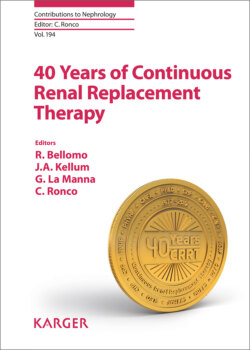Читать книгу 40 Years of Continuous Renal Replacement Therapy - Группа авторов - Страница 33
Anticoagulation A Paradigm Shift in Anticoagulation Approach
ОглавлениеAnticoagulation is crucial for CRRT practice. Premature CRRT failure due to early clotting is a frustrating experience that reduces treatment efficacy and increases bedside workload and costs. For decades, unfractionated heparin (UFH) represented the standard CRRT anticoagulant. Drawbacks of UFH anticoagulation were the need for a high blood flow and an increased bleeding risk, particularly in surgical patients. In the early 90s, CRRT anticoagulation was revolutionized by the introduction of regional citrate anticoagulation (RCA) [13, 14]. Compared to UFH, RCA significantly decreased bleeding risk and prolonged circuit and FLS. The development of novel citrate formulations and diluted citrate solutions [15] further propagated RCA as a primary anticoagulant strategy in the intensive care unit. Guidance for optimal CRRT anticoagulation has been bundled in clinical algorithms [16], an example of which is depicted in Figure 2. However, according to the KDIGO guidelines, RCA is the first choice for CRRT anticoagulation, regardless of whether the patient is at risk for bleeding or not [6].
